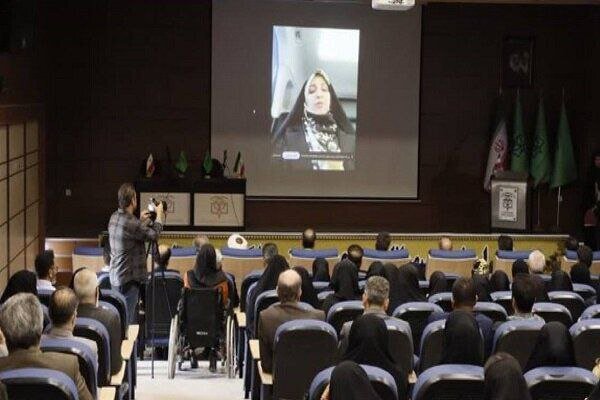Empowering rural communities essential for economic cultural development
‘Empowering rural communities essential for economic, cultural development’
TEHRAN – The Vice President for Women and Family Affairs, Zahra Behrouz-Azar, has said empowering rural communities is a prerequisite for the economic and cultural development of the country.

Referring to the difference between the concept of village and local community, the official said, “The rural areas’ economic activities involve agriculture, animal husbandry, crafts, and natural resources.
However, the local community has a broader concept and includes different groups of people, not only in rural areas, but also in urban neighborhoods, nomadic areas, and even digital communities. Local communities rely on social interactions, traditions, beliefs, and shared human relationships.”
The official made the remarks via a video conference while addressing an event called “university, social responsibility, and empowering local areas”, Mehr news agency reported.
In villages, the development of agricultural infrastructure, animal husbandry, health, and education are basic needs, while in local communities, issues such as preserving culture, fostering social interactions, and strengthening support networks are significant.
Referring to the fact that only 30 percent of the country’s population resides in villages, Behrouz-Azar said depopulation of rural areas will result in losing a significant proportion of cultural heritage, art, language, and lifestyle.
The official went on to urge universities and educational centers to utilize their knowledge and modern technologies to address current challenges in rural communities, help boost their productivity, and improve the quality of life of farmers, particularly women farmers since they play a key role in empowering rural communities.
Rural development
Villagers and nomads play a vital role in the political, economic, and social developments of Iran. So, October 7 was declared in 2013 as the National Day of Village and Nomads.
Despite their low population, they have a great contribution to all-out national development.
Although oil, industry, and service sectors hold a significant share of the national economy, the rural and nomadic economy is considered an inexhaustible source for the nation, compared to exhaustible natural resources.
Living far from pollution and current problems of cities and being less dependent on oil resources, they play a critical role in sustainable development.
Villagers and nomads take the lead in providing food, food security, and healthy food production.
They have a major role in the tourism and handicraft industry and they are sources of many cultures and traditions in the country playing an important role in ensuring the country’s security, especially in borders and remote areas.
Some 25 percent of the country’s population lives in villages, producing around 70 percent of food for the domestic market.
Currently, more than 90 percent of agricultural and food products are produced in villages. Some 25 percent of the country’s meat products and 35 percent of handicrafts, as well as a major part of organic dairy products, including vegetable oil, milk, curd, and other materials, are produced by nomads.
In fact, the economy of the rural areas is not limited to agriculture; it includes various industries such as handicrafts, creative industries, clothing, processing industries, food, medicinal plants, carpentry, furniture, tourism, ecotourism, fisheries, carpets and rugs, and dried fruits.
The Majlis (the Iranian Parliament) approved a total of 31 trillion rials (nearly $35 million) for rural development in the budget bill for the Iranian calendar year 1401 (March 2022-March 2023), IRIB reported.
By allocating this amount of budget, the whole credit of comprehensive development plans will reach 42 trillion rials, Akbar Nikzad, head of the Housing Foundation, said in June 2022.
The comprehensive development plans aim to develop rural areas in line with cultural, economic, and social conditions, as well as housing provision for the rural residents and improving environmental service.
MT/MG
source: tehrantimes.com